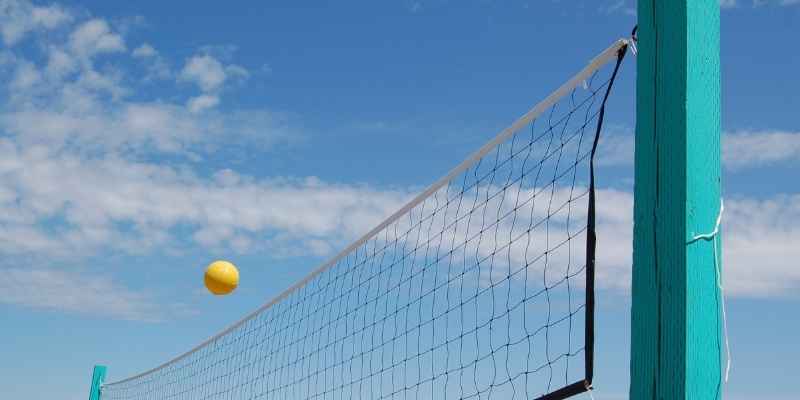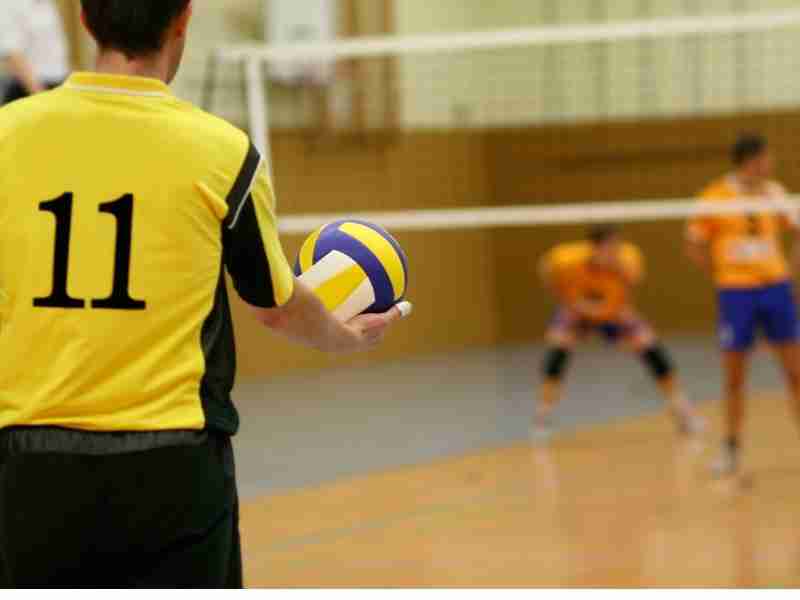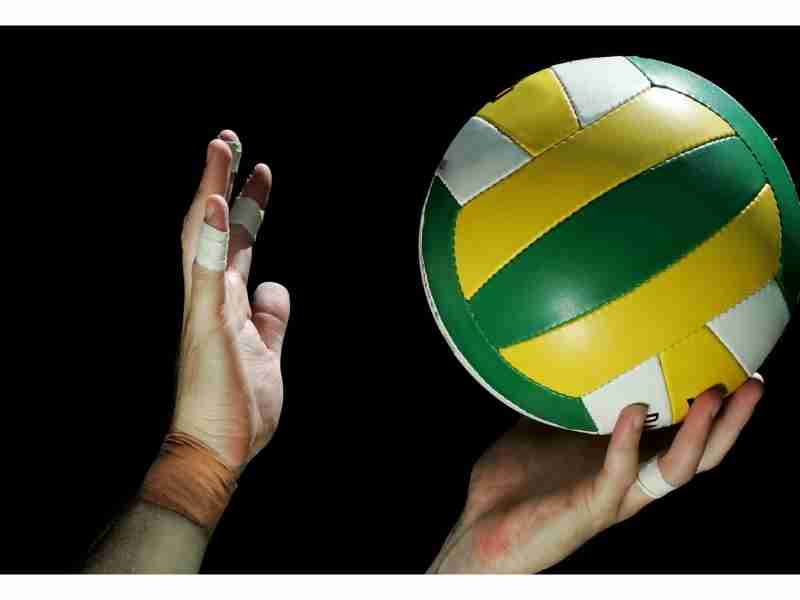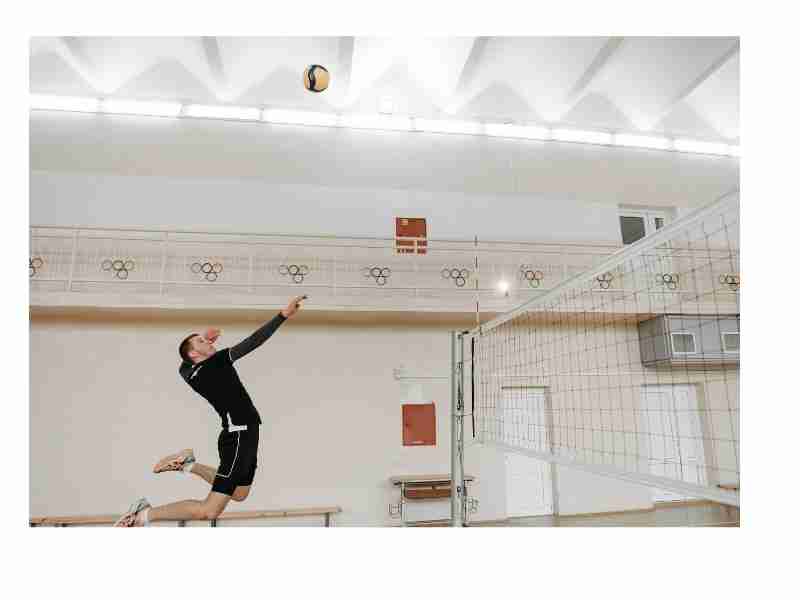
If you’re a volleyball player, you know that there are many different types of sets. What each type is, and how to execute them? In this blog post, we’ll go over the most common types of sets in volleyball. We’ll also provide tips on performing each set correctly if you want to improve your game.
Outside the serve, the setting is often called the most important contact in volleyball. A good setter can make an offense run smoothly.
A setter needs to read the defenders and know where to place the ball, so the hitters can do their job and put the ball away.
A good setter is a court leader who can help run an offense like a well-oiled machine. When it comes to game strategy, the set is essential.
Having a good setter can make all the difference in whether or not a team can execute its game plan and come out with a win.
The Set
In volleyball, a set is a move used to send the ball over the net to score a point. The set is typically used to set up a more powerful Spike, the primary offensive move in volleyball. A well-executed set can be complicated for the opposing team to defend, and it can often lead to easy points.
The set is a contact made overhead to direct the ball to a hitter on the offensive side of the net. It is considered the second contact after they receive and is commonly called a “bump set.” Most of those contacts are made from the system and are not considered quality sets.
A bump set would still follow the guidelines below regarding sets’ types and trajectories. There are three main types of sets: float sets, roll sets, and quick sets.
Float sets have a high, slow trajectory and are used to set hitters standing near the net. Roll sets have a low, fast trajectory and are used to set hitters who are farther away from the net. Quick sets are used to surprise the defense with a quick attack. They can be used from any position on the court but are most commonly used from the back row. Quick sets have a high trajectory and travel at medium speed.
Regardless of the type of set, all sets should be understood.
Types of Sets
All heights are measured from the top of the net, so a “one meter high” set requires the ball to travel one meter above the top of the net. The width of the court is also important in volleyball, which is 9 meters (29 feet 6 inches) for both men’s and women’s matches. These dimensions are the same for all official volleyball matches, indoors or outdoors.
Slow (Third) Tempo
When playing volleyball, you should use the third tempo to get a feel for the game and learn how to control the ball. This is especially important for setters, who must make quick decisions while controlling the game’s flow. Even experienced players can benefit from the third tempo because it allows them to fine-tune their skills and strategies.
The slow tempo sets high, and slow trajectories give hitters time to evaluate the ball flight and take a systematic approach.
Volleyball is played at a slower pace at the lower levels. This allows inexperienced batters to attack the ball at a relatively high point. Blockers may find it easier to track and advance on the ball at this level, but they aren’t typically skilled.
So, it is generally more straightforward for hitters to hit down and into the opposing court. This approach can be effective against less skilled opponents but often fails against more experienced players.
When playing at a higher level, hitters must vary their shots and mix in some attacks that are hit down and out of the court. This will keep the opponents from focusing solely on defense and eventually lead to openings in their defense that can be exploited for easy points.
One setter is in the middle, and the other is outside. This increases attack options. The middle setter can quickly pass the ball to the outside hitter, who can then attack. This can throw off the opposing team and score. Two-setter systems provide a more consistent setting.
1. The Four
In volleyball, a four is a specific type of play. It’s a high set meant to land at the left front hitter’s antenna after rising about three meters in the air. This gives the hitter plenty of room to manoeuvre and makes it easier to spike the ball over the net.
To ensure that the ball is placed in the proper position, it should be placed about a meter away from the net. This allows the hitter to approach the ball at an angle and generate enough power to fly it over the net. A four can be an extremely effective way to score points and put your team in the lead.
2. The Five
In volleyball, a five is the polar opposite of a four. The ball travels about three meters up before landing at the right-front hitter’s antenna.
The set height can be lowered after the setter and hitter develop a rapport. As a result, the blocker must work harder to defend while the hitter has more time to hit the ball.
Additionally, it puts the setter in a better position to make the following set.
3. The Two
With the intention of the middle hitter attacking close to the middle of the net, the two are placed almost directly in front of the setter. The ball should only travel about a meter high to enable the middle to move more quickly. When done correctly, this can be an excellent way to surprise your opponents and pick up some quick points.
However, it can leave your team vulnerable to a counterattack if not executed properly. It is essential to consider all variables before attempting a two-set in a game situation.
Second Tempo
The natural progression from the slow tempo setting is the second tempo. Players with a year or more experience and high-level high school athletes should run second tempo sets at the very least. A faster pace and quicker offensive plays are available in the second tempo. Most second tempo sets are closer in terms of both height and distance from the net.
So, an attacker can reach the ball and make their shot more quickly. Each player must be precise when they get a chance to hit the ball because the second tempo also means fewer shots per set.
One of the most important things for a hitter is their approach to the set. The time from when the set leaves the setter’s hands to when the hitter strikes the ball is speedy, so the hitter must be able to adjust their approach quickly.
A hitter may come across various sets, and each one necessitates a different strategy. An outside hitter, for instance, will need to get to the point of attack before the blocker in a second-tempo set because the ball will be moving faster than usual.
A fast-paced set, like a middle attacker, requires them to be ready to change their course to avoid being blocked. Batters should begin their approach as soon as the pass or first touch reaches its peak to give themselves enough time to adjust to the set.
4. The Hut
A hut attack is frequently used when the ball is placed close to the antenna. The left-front hitter is usually in charge of making the hut, and the goal is to hit the ball as hard and quickly as possible. The ball must be placed at or near a meter high to execute a hut successfully.
The ball should also touch down inside the antenna within a meter.
5. The 32
In volleyball, a 31 is a type of combo typically run with a 32. It tricks blockers into thinking the ball is going to the left front or middle attack. Between the middle and outside hitters, the ball should be placed at or nearly a meter high, ready to be hit off the net.
When the left front hitter comes to this set, the players running the 31 often make a swinging motion. This could be an excellent way to fool the defense and kill someone.
However, if not executed properly, it can leave your team out of position and vulnerable to a counterattack. When running a 31, communicate with your teammates and have a clear plan of attack.
6. The Red
The red and hut set heights and landing points are identical, but the red set has been reverted to a backset. This can be done to keep your opposite hitter happy while keeping the defense on their toes!
Keep your eyes, and your shoulders square to the net when hitting from this position. You could also step forward with your right foot to add more power. Remember to snap your wrists and follow through with your arms to ensure the ball goes over the net!
The Two (Second Tempo)
Holding the ball in the non-dominant hand, quickly move it to the opposite side of the body before setting it. When the opposing team is in a good blocking position, the two are typically used because it can be difficult for them to readjust in time.
The Two set is characterized by the middle hitter’s quick attack while allowing the middle to take a normal approach. Middle hitters will love this set because it allows them to get a quick, easy kill while the defense tries to cover the outside hitter. This set is also proper when you have a veteran middle infielder and a rookie outside hitter.
The two sets can be played as a set play or a rotation. Middle hitters switch with outside hitters during rotations and set plays.
Fast (First) Tempo
When setters run the first tempo, they keep the hitter in mind with each set. This volleyball set is intended for highly skilled hitters who can easily execute most types of attacks. The first tempo sets aim to get the ball to the hitter as soon as possible so they can put it away for a point. This necessitates excellent timing and technique on the part of the setter.
Furthermore, to make efficient use of this fast tempo, the hitters must be in sync with the setter. First tempo sets can be highly effective when all players are on the same page.
However, even one player off their game can throw the entire offense out of rhythm. So, first tempo sets are not for everyone but can be devastating when executed properly.
The fast tempo set is when the hitter begins their approach as the ball leaves the passer, while the slow tempo set is when the hitter waits until after the ball has been passed to them before starting their approach.
Finding the right angle is crucial in hitting a first tempo set. The side of the court where they are receiving the ball should be the starting point for the hitter’s approach. This will give them the best opportunity to land a big blow. The hitter must keep a close eye on the ball as it is passed. They should be prepared to move to it as soon as the ball is passed.
The hitter must be ready to quickly jump and strike the ball with their shoulder, arm, or forearm. A powerful hit cannot be made if the hitter is not in the proper position when the ball is passed. The opposing team may then have an easy opportunity to dig. When hitting a first tempo set, hitters must be swift and potent.
The Shoot
The shot is quick and gets to the left front hitter quickly.
The objective is to get the ball in front of the left-front hitter so they can spike it. This set is frequently used when the opposing team is in a good blocking position, and you need to get the ball around them.
For the best chance of a point, the ball should travel almost parallel to the net’s top. This can be accomplished by attacking within a meter of the antenna, which allows for greater accuracy and speed.
However, good timing between the setter and the hitter is also essential because it determines whether the ball crosses the net or not. When executed correctly, a shoot can be a powerful tool for your team to gain an advantage. Consequently, mastering this technique is crucial.
The Half Shoot
The half shoot, or “three,” is a quick, powerful attack that can be difficult to defend. It is often a surprise attack and can be hit from outside the middle. The key to a successful half shoot is timing.
Setters must remember where the hitter likes the ball set, and the hitter must make contact with the ball at the perfect moment. When executed correctly, the half shoot can be an extremely effective weapon.
However, if the timing is off, the ball will likely go into the net or out of bounds. So, both setters and hitters must be in sync to execute a successful half shoot.
The 31
The 31 set in volleyball is a quick set explicitly used for a middle attack. The middle hitter hits the ball nearly as soon as it leaves the setter’s hands, which gives them an advantage over other hitters. The 31 set is also known as the “pipe” because of how the ball is set up.
The ball is set up so that it goes through the air in a tube-like fashion, making it difficult for blockers to defend against. The 31 set is challenging to master, but it can be very effective when done correctly.
The One
A lot of people call it a “quick set.” The ball is placed above the net so the center can swing and catch it. This makes it harder for the blockers to defend and gives the hitter more power on the ball. A quick set can be a potent offensive tool if done correctly.
The Back One
A back-set is a quick, low set made behind the setter. This set catches the defense off guard and creates an opening for a hitter. Back-sets are often used as part of a serve receive rotation or as a way to transition from defense to offense.
The middle hitter also attacks the back-set, giving the opposing middle blocker fits. If you can execute a successful back-set, your team will be in good shape. If not, the other team will likely score some points. Back-sets are essential to the game and should be executed correctly to succeed.
The Slide
The fun part of slide sets is watching the middle blocker’s fancy footwork. The middle blocker will use a four-step strategy to reach the ball as it moves toward the right-side antenna. The batter will leap off one foot and slide to the right before swinging quickly and forcefully at the ball.
Depending on the order of the batters and whether or not the other team’s batter is on the field during the play, the slide can land anywhere inside the antenna. This move is hard, but it can confuse and surprise the defense if it’s done right.
Additionally, it’s always entertaining to see a player make a challenging play seem simple. Keep an eye out for the slide set the next time you watch a volleyball match because you never know what you’ll see there.
FAQs
What Is The 4 Set Of Volleyball?
In volleyball, there are four main types of sets: the four-set, the two-set, the one-set, and the three-set. The four-set is a high set typically used to set up an outside hitter. The two set is a low set usually used to set up a middle hitter.
The one set is a quick set used to set up a middle hitter. The three set is a quick set used to set up an outside hitter. The coach must determine which type of set will be most effective in any given situation.
What Is A 5 Set In Volleyball?
In volleyball, a five-set is a high ball shaped like the letter A with an arc reaching a peak anywhere from eight to ten feet. It is a back set that is attacked from Zone 2 by the right front hitter.
This type of set is typically used to score points, as it is very difficult for the opposing team to defend against. A five-set can be an extremely effective way to score points and help your team win the game.
What Is A Slide Set In Volleyball?
The slides are a quick-tempo play with a higher degree of difficulty than others but can be a difference-maker. The player runs behind the setter on a slide and moves more parallel with the net. That means the blockers have to move and don’t have as much time to set up defensively. As a result, this play can effectively create openings for attackers.
However, it is essential to note that slides require good timing and coordination between the setter and the attacker. If executed properly, slides can be crucial in any team’s playbook.
What Is A 51 Set In Volleyball?
The goal of the 51 set is to beat the blockers by speed and to create openings for the outside hitters by getting the middle blocker of the other team to commit a block on the middle attacker.
This can be done by running a quick offense and making good decisions with the ball. The hitter must also be very efficient in this set, as they are the key player. This can be not easy, as it requires precision and timing. However, if done correctly, the 51 set can be a very effective way to score points.
What Is A Tempo Set In Volleyball?
A tempo in volleyball is a type of offensive play where the setter tries to set the ball so that the hitter has time to take a quick approach and hit the ball before the blocker has time to react.
Tempo sets are often used when the opposing team is in a serving rotation that is out of position or when the blocker is not positioned well.
The goal of a tempo set is to score a point quickly before the opposing team has a chance to get organized. While tempo sets can be practical, they can also be risky, as they often leave the back row defenders out of position.
Bottom Line
Volleyball is a complex sport with many nuances that players must understand to succeed. In this blog post, we’ve outlined the three main types of sets in volleyball. We hope this information will help you as you continue to develop your understanding of sets in volleyball.






